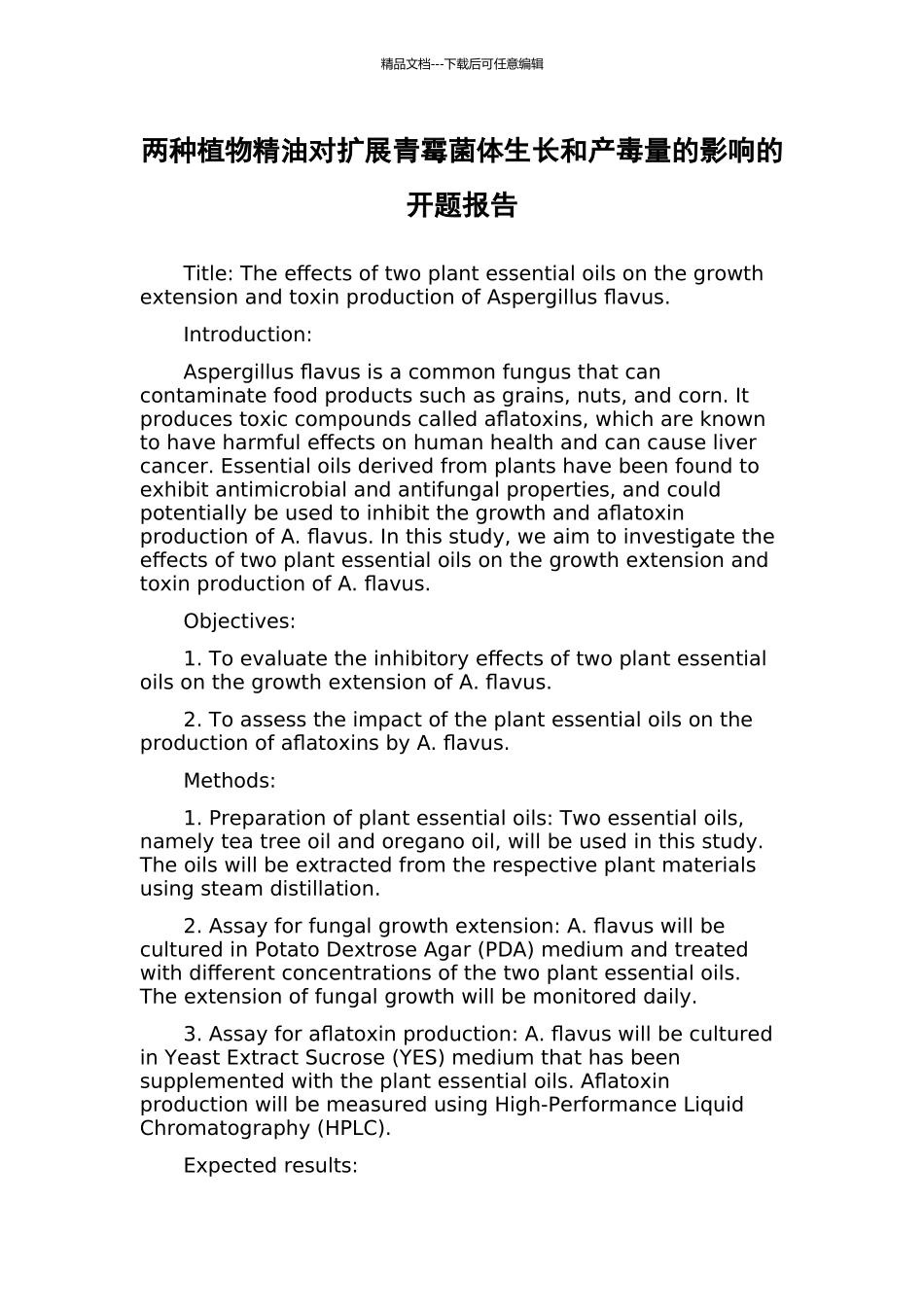精品文档---下载后可任意编辑两种植物精油对扩展青霉菌体生长和产毒量的影响的开题报告Title: The effects of two plant essential oils on the growth extension and toxin production of Aspergillus flavus.Introduction:Aspergillus flavus is a common fungus that can contaminate food products such as grains, nuts, and corn. It produces toxic compounds called aflatoxins, which are known to have harmful effects on human health and can cause liver cancer. Essential oils derived from plants have been found to exhibit antimicrobial and antifungal properties, and could potentially be used to inhibit the growth and aflatoxin production of A. flavus. In this study, we aim to investigate the effects of two plant essential oils on the growth extension and toxin production of A. flavus.Objectives:1. To evaluate the inhibitory effects of two plant essential oils on the growth extension of A. flavus.2. To assess the impact of the plant essential oils on the production of aflatoxins by A. flavus.Methods:1. Preparation of plant essential oils: Two essential oils, namely tea tree oil and oregano oil, will be used in this study. The oils will be extracted from the respective plant materials using steam distillation.2. Assay for fungal growth extension: A. flavus will be cultured in Potato Dextrose Agar (PDA) medium and treated with different concentrations of the two plant essential oils. The extension of fungal growth will be monitored daily.3. Assay for aflatoxin production: A. flavus will be cultured in Yeast Extract Sucrose (YES) medium that has been supplemented with the plant essential oils. Aflatoxin production will be measured using High-Performance Liquid Chromatography (HPLC).Expected results:精品文档---下载后可任意编辑We expect that the plant essential oils will exhibit inhibitory effects on the growth extension of A. flavus. Furthermore, we hypothesize that these oils will also significantly reduce the production of aflatoxins by A. flavus.Conclusion:This study will provide valuable insights into the potential of using plant essential oils as natural inhibitors of A. flavus growth and aflatoxin production. The findings from this research have the potential to aid in developing new and effective methods for controlling aflatoxin contamination in food products.

